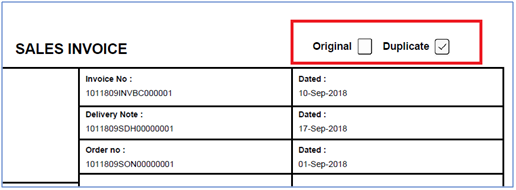
The needs of businesses and corporations are rapidly changing. A global pandemic has changed how we do business, how we live, and how we work. More than ever, we are looking to managed hosting providers and cloud computing to meet the demand for quarantine and work from home orders. But how can you compare one vps hosting provider to another?
More than ever, we rely on virtual and cloud computing to connect teams of all sizes to complete our day to day tasks. We also rely on cloud servers to keep our websites and applications running. Our businesses need servers that offer the best performance for the platforms that keep sites going.
Fortunately, there are many VPS hosting providers to compare from to meet your pricing needs. But, where performance is concerned, there is one clear winner: Liquid Web.
Liquid Web’s VPS Hosting Outperforms Its Closest Competitors in LAMP Stack Performance
Cloud Spectator conducted performance studies on four major cloud service providers. The report breaks down performance in five categories: Virtual Processor (vCPU) Performance, Random Read/Write IOPS, Apache Web Server Performance, MySQL Mixed Workload, and PHP Performance.
We must keep in mind that this comparison is a server-side performance test. Your mileage may vary when it comes to the site or application you have developed. The VPS hosting comparison performed by Cloud Spectator tests server performance for platforms that rely on the LAMP stack. Such platforms include WordPress, Joomla, or other commonly used CMS and eCommerce software.
What is the LAMP Stack?
The LAMP Stack is the collection of web service software for Linux servers. LAMP is an acronym for the original four software components that make up the “stack” or suite of software:
- L – The Linux Operating System
- A – Apache Web (HTTP) Server
- M – MySQL relational database management system
- P – PHP programming (scripting) language
The components of the stack are interchangeable with other options that exist. These are the necessary components with which most Linux servers start.
To measure the performance of websites for this study, Cloud Spectator examined the performance of Cloud Infrastructure as a Service (IaaS) and each piece of the LAMP stack.
How Testing Was Done and the Data Collected
Cloud Spectator collected data on entry-level virtual machines (VMs) across Liquid Web (VPS), Amazon, Rackspace, and DigitalOcean for 48 hours. In those 48 hours, Cloud Spectator ran multiple types of performance tests. The median results are in their report.
The VMs tested with each provider were as follows:
- Amazon AWS: C5.Large with SSD EBS – US East
- DigitalOcean: 4GB Compute Optimized – US East (NYC)
- Liquid Web: 2GB SSD VPS – US Central (Zone C)
- Rackspace Cloud: Compute Optimized 4GB – US Central (Dallas-Fort Worth)
The Linux operating system used in this testing was Ubuntu 16.04 LTS.
LAMP Stack Performance Results
vCPU Performance
The virtual processor (vCPU) of a VPS what a standard CPU is to a physical computer. The vCPU performs the server’s processing tasks, such as reading and writing data, compressing images, or encrypting data. It aids in delivering the desired website experience to the user.
The faster a processor completes its tasks, the better the performance users will experience. Cloud Spectator ran several processor-intensive jobs across Amazon, DigitalOcean, Liquid Web, and Rackspace VMs. The results show Liquid Web leading in the rankings for single-core vCPU performance.

Random Read/Write IOPS Performance
To measure Disk I/O (input/output) or storage performance, they looked at the results for Random Read/Write IOPS (input/output operations per second). IOPS is a metric commonly used to measure disk I/O performance.
When it comes to blogs, eCommerce sites, and mobile apps, a considerable amount of files get stored. These files need to be updated or refreshed periodically, which means faster read/write performance directly impacts your website or application’s responsiveness.
Random read/write performance can have a notable impact on any I/O intensive application’s performance. Some such applications are Magento, WooCommerce, and many other eCommerce content management systems (CMS). While it is essential to have fast read performance, what matters most to business owners when traffic is high is how many orders your CMS application can handle. Liquid Web provides the top disk performance no matter what the application requirements are.


Apache WebServer Performance
Apache Webserver is a widespread web server that handles client request traffic to your website or application. Other commonly used web servers are Nginx or LiteSpeed. For this test, each server was running Apache.
The more per second requests Apache can serve, the more responsive the website or application is. The number of website requests depends on the vCPU performance, examined previously.
Performance data for Apache was collected by running Apache and Apache Benchmark on the same VM (localhost) to isolate VM performance. Liquid Web’s VPS offers the best raw Web server performance.

MySQL Mixed Workload
MySQL is a database management system that stores all of the critical information that a website needs to deliver a fully dynamic and vibrant Web experience to your end-users. If a user is required to login to access specific parts of your website, the user identity and credentials would presumably get stored in a MySQL database. Additionally, customers who purchase something from your online store will search (reads) and refresh (writes) the online store’s database.
Cloud Spectator created a test for MySQL databases to examine the performance of each server type. They included both reads/writes to the database. The database comprised roughly 5 million rows and was reviewed with 24 simultaneous threads to ensure requests were coming in and out continuously, stress-testing the system. The results illustrate Liquid Web’s superior database performance.

PHP Performance
PHP is a programming language commonly used by many popular Content Management Systems. One of PHP’s most prevalent use cases is to generate the dynamic content on a website and query MySQL for precise data. For example, PHP will produce the registration page and transfer it to MySQL, which will store that information in the database for long-term retention and future transactions.
Apache and PHP must perform as quickly as possible to avoid website performance degradation. eCommerce stores rely on transaction speed and response time. PHP performance is measured by testing numerous aspects of the PHP interpreter used by VMs to execute PHP code. The PHP interpreter performance is directly affected by the vCPU. Better vCPU performance translates to high PHP performance, although various other aspects of the VM and operating system (OS) may also impact performance.
In the tests performed by Cloud Spectator, Liquid Web’s PHP performance topped the competition.

VPS Hosting Comparison: Why is Liquid Web Better?
What sets Liquid Web’s performance apart is a combination of best practices and ingenuity. Our servers, built specifically for high performance and incredible speed, are the direct result of our team’s technical prowess, technology knowhow, and a drive to implement the best products for our customers.
We’re incredibly proud of the performance results we see from our VPS Hosting. The performance comparison showcases the real power of our Cloud Platform. Liquid Web’s VPS Hosting surpasses our competitors in vCPU Performance, Random Read/Write IOPS, Apache Web Server Performance, MySQL Mixed Workload, and PHP Performance.
The post VPS Hosting Performance Comparison: Liquid Web VPS Hosting Tops EVERYONE appeared first on Liquid Web.


























 can help deliver your
can help deliver your 




